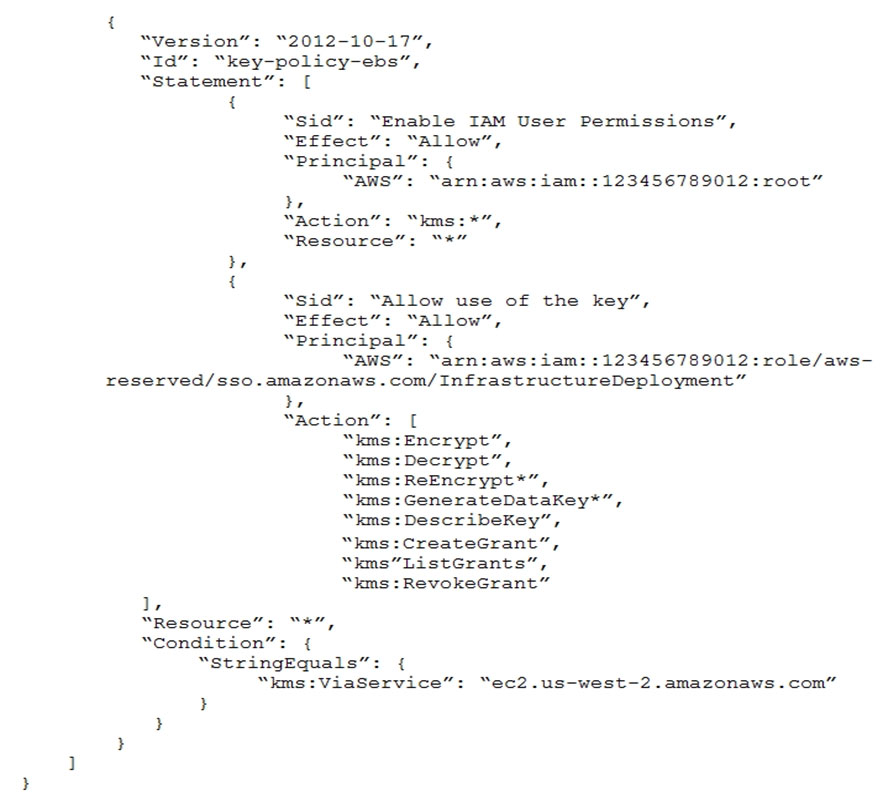

A company wants to establish separate AWS Key Management Service (AWS KMS) keys to use for different AWS services. The company's security engineer created the following key policy to allow the infrastructure deployment team to create encrypted Amazon Elastic Block Store (Amazon EBS) volumes by assuming the InfrastructueDeployment IAM role:
The security engineer recently discovered that IAM roles other than the InfrastructureDeployment role used this key for other services.
Which change to the policy should the security engineer make to resolve these issues?
D2
Highly Voted 2 years, 7 months agoRaphaello
Most Recent 1 year, 4 months agoNoexperience
2 years agoude
2 years, 11 months agoSkr81
3 years, 4 months agoAliS2020
3 years, 5 months agosam_live
3 years, 5 months agodcasabona
2 years, 11 months agoroger8978
3 years, 6 months agoargol
3 years, 6 months ago